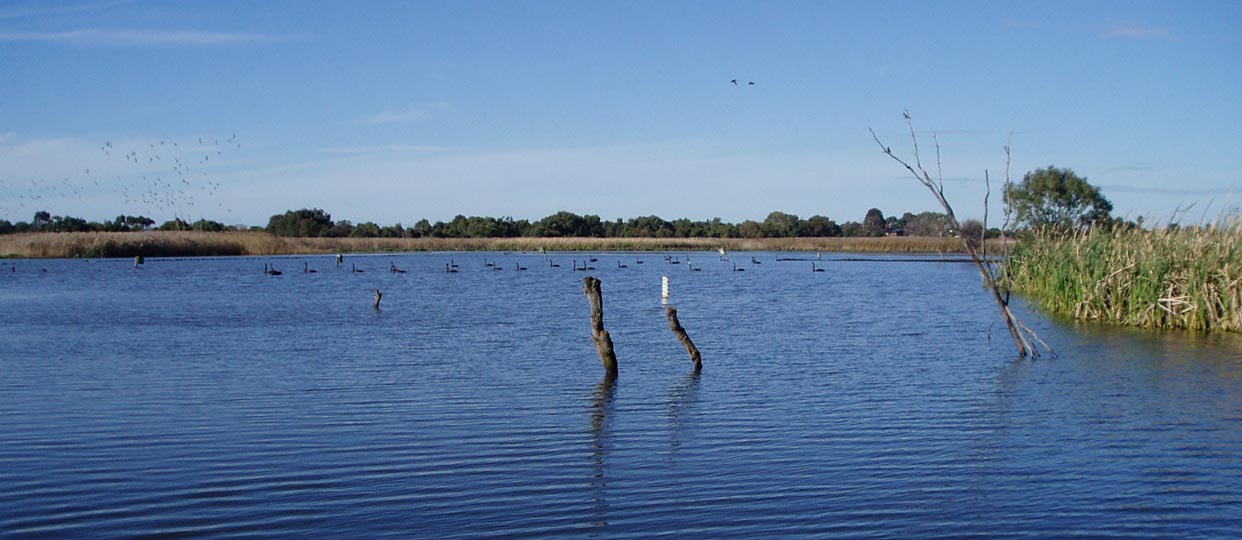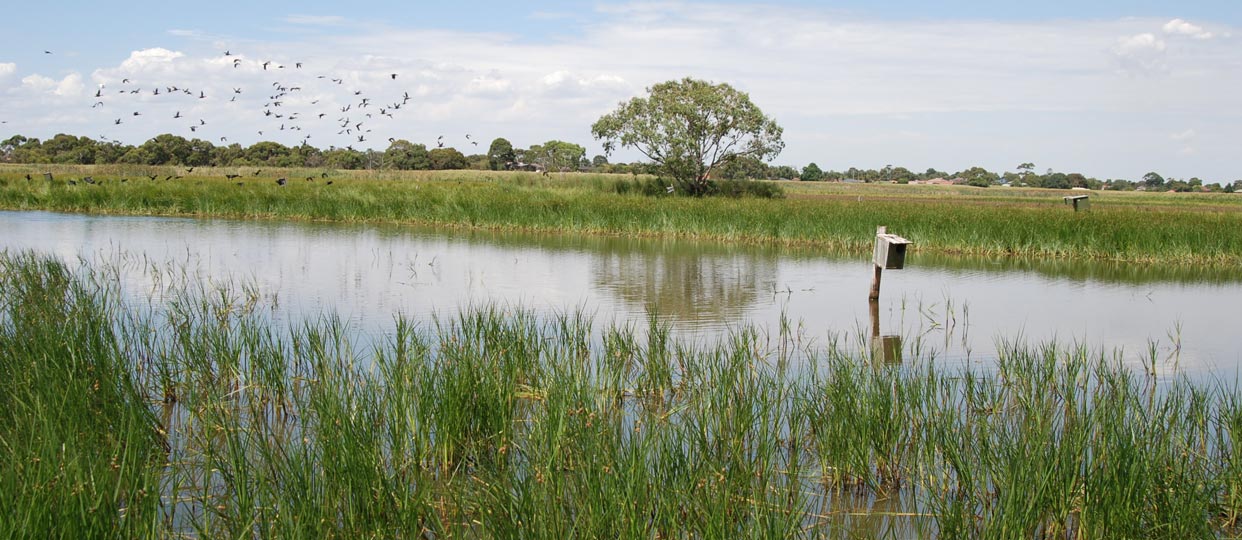Background
Melbourne Water required a monitoring program to manage ecological values at the Edithvale-Seaford RAMSAR Wetlands. AQUEST designed and is undertaking a monthly monitoring program to provide input into management actions to support ecological values including migratory and residential bird populations.
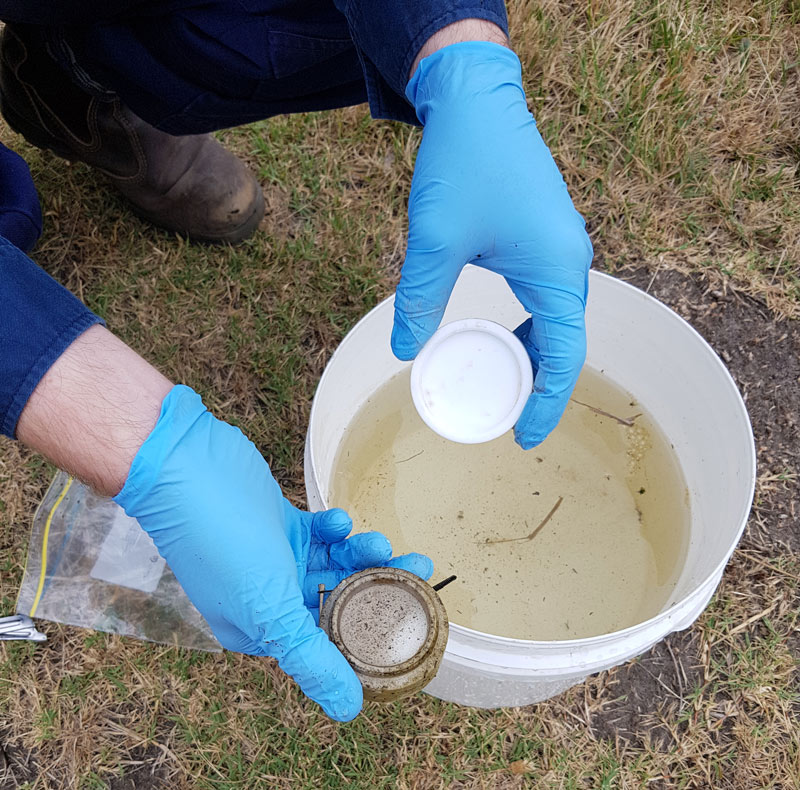 Photo of a researcher processing a passive sampler, on its way to the lab for pesticide analysis.
Photo of a researcher processing a passive sampler, on its way to the lab for pesticide analysis.
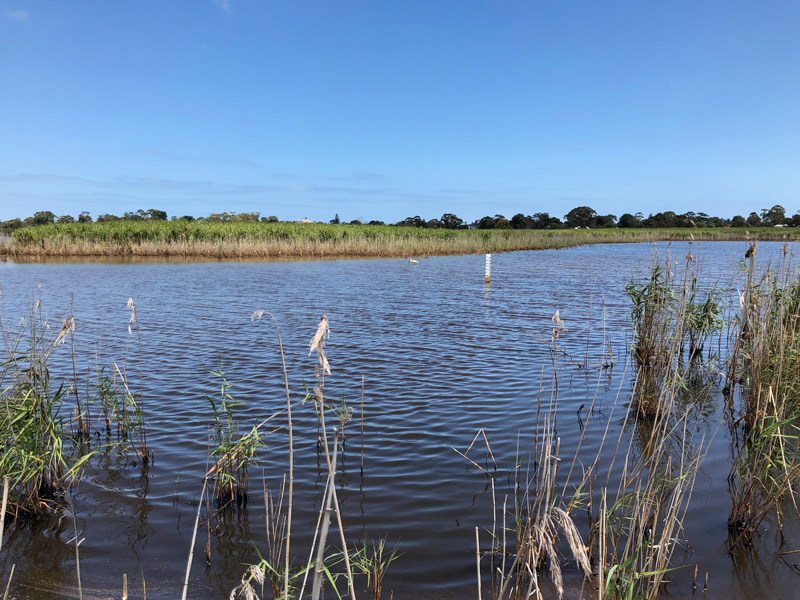 Photo of the Edithvale-Seaford Wetlands.
Photo of the Edithvale-Seaford Wetlands.
Key points
- Macro invertebrate survey (water bugs and their emergent adult forms), water quality, sediment quality and passive sampler surveys are undertaken.
- Pesticides have been detected in stormwater inflow.
- There is now a concentrated focus on Seaford rather than Edithvale, as urban pollutants have been shown to be of greater impact here.
- Natural acid-sulphate soils found at the southern end of Seaford wetlands play a complex role in site specific water quality.
- Our results are being used as an input into an ecological risk assessment to manage the use of recycled water into the Wetlands, as a climate change and potential acid sulphate soil management action.
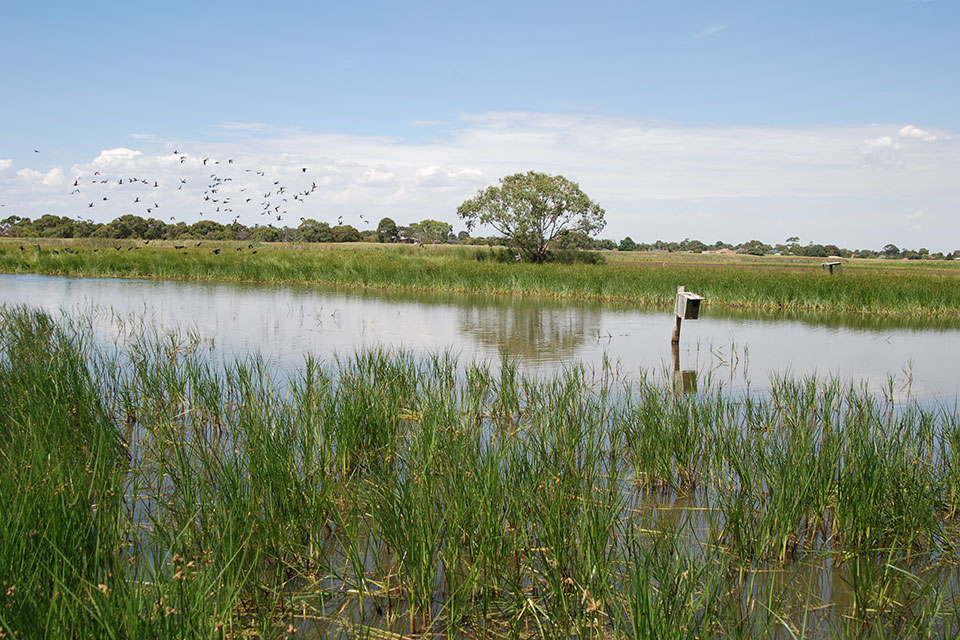
Seaford Wetlands
Hear Dr. Sara Long talk about her research at Seaford Wetlands, presented at the 'Birds at Edithvale and Seaford Wetlands Event, 16 February 2020'.
Expected completion date
Ongoing since 2018
For more information
Contact Sara.Long@rmit.edu.au
#RAMSAR #SiteManagement #EdithvaleSeafordWetlands #PassiveSampling #WaterQuality #SedimentQuality #Macroinvertebrates #WaterBugs
